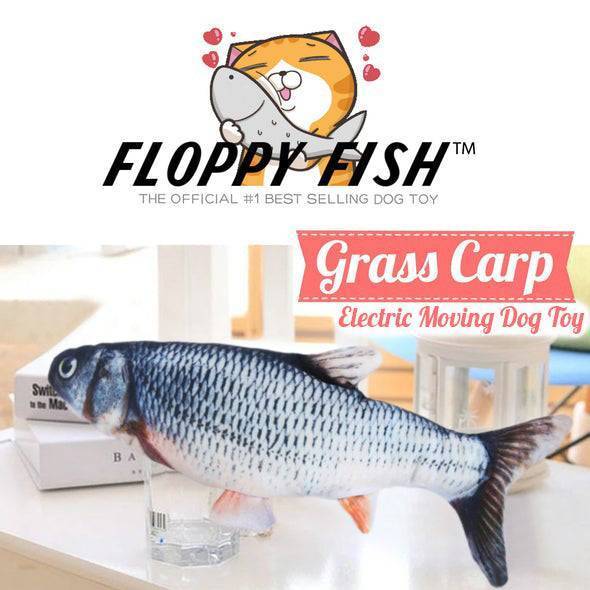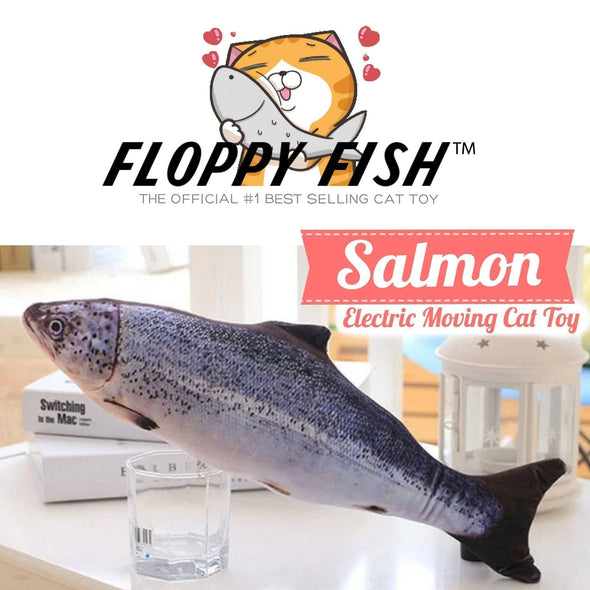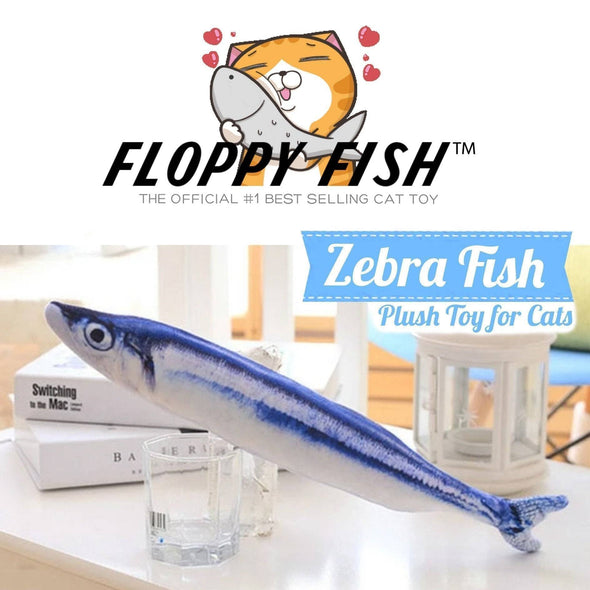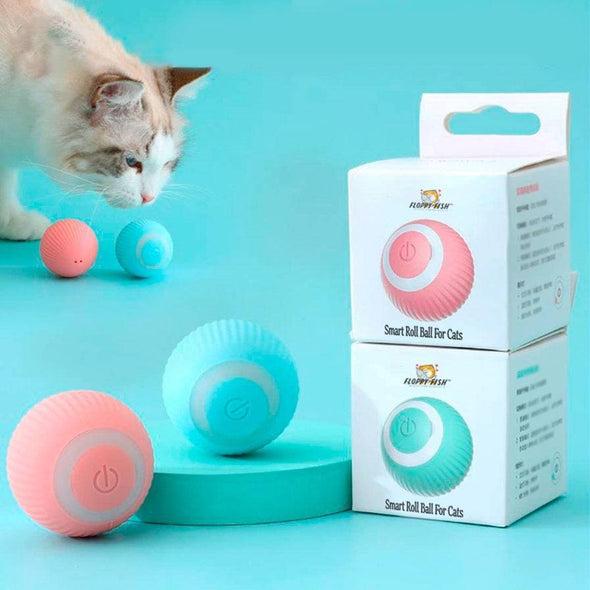The Best Motion-Activated Dog Toys in 2025: Smart Play for Active and Busy Pets

Picture this: You're working from home, trying to focus on an important video call, when your energetic golden retriever starts pacing, whining, and eventually decides your favorite slippers make excellent chew toys. Sound familiar? If you're nodding along, you're not alone. Millions of pet owners struggle with the daily challenge of keeping their dogs mentally stimulated and physically active, especially when life gets busy.
The solution isn't more walks (though those help too) – it's motion-activated dog toys that work while you can't. These innovative toys respond to your dog's natural movements, creating an interactive play experience that can transform a bored, restless pup into a happily entertained companion.
What Are Motion-Activated Dog Toys and Why Do They Work So Well?
Motion-activated dog toys are intelligent interactive toys equipped with sensors that detect your dog's movement, touch, or proximity. When triggered, these motion sensor dog toys spring into action with realistic movements, sounds, or lights that captivate your dog's attention and encourage continued play.
Unlike traditional static toys that quickly lose their appeal, these smart toys mimic the unpredictable movements of real prey animals. This taps directly into your dog's ancestral hunting instincts – the same instincts that make them chase squirrels in the yard or pounce on moving shadows.
Dr. Olivia Mitchell, a veterinary behaviorist, explains: "Dogs are naturally wired to respond to movement. When a toy moves unexpectedly, it triggers their prey drive in a healthy, controlled way that provides both mental stimulation and physical exercise."

How Do Motion-Activated Toys Transform Your Dog's Daily Routine?
The magic happens in the unpredictability. Traditional toys become boring because dogs quickly learn they're inanimate objects. But interactive toys for dogs with motion sensors create an element of surprise that keeps dogs engaged longer.
Consider Jake, a busy software developer whose border collie mix, Luna, was destroying furniture out of boredom. Within a week of introducing a motion-activated fish toy, Luna's destructive behavior decreased by 80%. "She'd spend 20-30 minutes at a time batting at this thing, completely absorbed," Jake recalls. "It was like having a playmate for her when I couldn't be one."
These toys work especially well because they:
- Activate during peak boredom times: Your dog walks by, the toy moves, and suddenly they're engaged
- Provide variable rewards: Sometimes the toy responds immediately, sometimes with a delay – this unpredictability keeps dogs interested
- Encourage natural behaviors: Stalking, pouncing, and "hunting" in a safe, controlled environment
- Offer independent play: Your dog can entertain themselves without requiring your constant attention

What Types of Motion-Activated Dog Toys Deliver the Best Results?
Not all motion-activated toys are created equal. The most effective dog toys that move fall into several categories, each designed to trigger different aspects of your dog's natural instincts:
Realistic Animal-Mimicking Toys
These toys replicate the movements of fish, birds, or small mammals. The FLOPPY FISH™ Interactive Toy for Dogs is a perfect example, featuring realistic flopping motions that activate when your dog approaches. Available in varieties like Salmon and Grass Carp, these toys provide the most authentic prey-like experience.
Rolling and Bouncing Ball Toys
Smart balls that roll away when touched appeal to dogs who love chase games. These are particularly effective for high-energy breeds that need to burn physical energy while engaging their minds.
Vibrating and Dancing Toys
These create erratic movements that trigger your dog's curiosity. The unpredictable wiggling and vibrating motions keep dogs guessing and engaged for extended periods.
Which Dogs Benefit Most from Motion-Activated Interactive Toys?
While virtually any dog can enjoy these toys, certain situations and dog personalities see the most dramatic improvements:
High-Energy Breeds: Border collies, Australian shepherds, Jack Russell terriers, and other working breeds often struggle with insufficient mental stimulation. Motion-activated toys provide the cognitive challenge these intelligent dogs crave.
Home-Alone Dogs: If your dog experiences separation anxiety or destructive behavior when left alone, these toys can provide comfort and distraction. The interactive nature helps combat loneliness and boredom.
Senior Dogs with Mobility Issues: Older dogs who can't exercise as vigorously still need mental stimulation. Gentle motion-activated toys encourage light play without demanding high physical activity.
Apartment Dogs: Urban dogs with limited outdoor access benefit enormously from toys that provide mental exercise in small spaces. A motion-activated toy can deliver the equivalent mental workout of a longer walk.

Are Motion-Activated Dog Toys Safe for Daily Use?
Safety is paramount when selecting any toy for your furry friend. High-quality motion sensor dog toys are designed with multiple safety features, but there are important factors to consider:
Material Safety: Look for toys made from non-toxic, BPA-free materials. Durable fabrics that can withstand chewing are essential, especially for power chewers.
Size Appropriateness: Choose toys sized appropriately for your dog. Too small poses a choking hazard; too large may be intimidating or difficult to interact with.
Motion Mechanism: Quality toys feature enclosed motors and sensors that can't be easily accessed by curious teeth. Avoid toys with exposed wiring or easily removable electronic components.
Supervised Introduction: Always supervise your dog's first few play sessions with any new toy. This allows you to observe their interaction style and ensure safe play.
The FLOPPY FISH™ Interactive Dog Toys collection exemplifies these safety standards, with USB-rechargeable designs that eliminate battery compartment risks and durable construction tested specifically for dog play.
How Long Do Motion-Activated Toys Keep Dogs Entertained?
One of the most common questions pet owners ask is about engagement duration. Unlike traditional toys that dogs might play with for 5-10 minutes, well-designed motion-activated toys typically hold attention for 20-45 minutes per session.
The key is the intermittent reinforcement schedule these toys naturally provide. Just like slot machines keep humans engaged with unpredictable rewards, interactive toys for dogs use unpredictable movement patterns to maintain interest.
However, engagement time varies based on:
- Dog's age and energy level: Puppies and young adults typically engage longer
- Novelty factor: New toys command more attention initially
- Toy complexity: More sophisticated movements and sounds increase engagement
- Environmental factors: Fewer distractions = longer play sessions
To maximize engagement time, rotate motion-activated toys every few days. This prevents habituation and keeps the toys feeling "new" and exciting.

What Should You Look for When Shopping for Motion-Activated Dog Toys?
Not all motion-activated toys deliver the same value. Here's what separates exceptional toys from disappointing purchases:
Realistic Movement Patterns: The best dog toys that move don't just wiggle randomly – they mimic natural prey movements. Look for toys with varied motion sequences that include pauses, sudden movements, and lifelike behaviors.
Durability Testing: Your toy should withstand enthusiastic play. Check for reinforced stitching, tear-resistant fabrics, and protected electronic components.
Battery Life and Charging: USB-rechargeable toys offer convenience and environmental benefits over disposable battery models. Look for toys with at least 1-2 hours of active play time per charge.
Size Options: The same toy design should be available in different sizes to accommodate various dog breeds. A motion-activated toy perfect for a chihuahua won't work for a Great Dane.
Multi-Sensory Appeal: The most engaging toys combine movement with sounds, textures, or even scents. This multi-sensory approach better replicates real prey and holds attention longer.
How Can You Maximize Your Dog's Enjoyment of Motion-Activated Toys?
Getting the most from your investment requires strategic implementation. Here's how to optimize your dog's experience:
Strategic Placement: Position toys in areas where your dog naturally spends time, but not so close to their food or water that it creates stress during meals.
Rotation Schedule: Introduce motion-activated toys gradually and rotate them with other enrichment activities. Combine with mental stimulation exercises for comprehensive enrichment.
Play Session Timing: Use these toys during peak boredom times – typically mid-morning and late afternoon when dogs have energy but limited outlets.
Positive Association: Introduce the toy during happy times, perhaps before meals or walks, to create positive associations.
Group Play Consideration: If you have multiple dogs, monitor interactions to ensure one dog doesn't monopolize the toy or become possessive.
Can Motion-Activated Toys Help with Specific Behavioral Issues?
Beyond basic entertainment, these smart toys can address several common behavioral challenges:
Separation Anxiety: Dogs with mild separation anxiety often benefit from having an interactive companion when alone. The toy's responsive nature provides comfort and distraction during stressful times.
Destructive Chewing: Bored dogs often chew furniture, shoes, or other inappropriate items. Motion-activated toys redirect this energy toward appropriate play objects.
Excessive Barking: Dogs that bark from boredom or attention-seeking often quiet down when engaged with stimulating toys. The mental focus required for interactive play naturally reduces vocal behavior.
Weight Management: For dogs who need more exercise but can't have extended walks due to weather or scheduling constraints, these toys encourage movement and calorie burning indoors.
Remember, motion-activated toys work best as part of a comprehensive approach to behavioral issues. Severe problems should always be addressed with professional training or veterinary behaviorist consultation.
How Do You Maintain and Care for Motion-Activated Dog Toys?
Proper maintenance ensures your investment lasts and remains safe for your dog:
Regular Cleaning: Wipe down toys weekly with pet-safe disinfectant. Many quality toys feature removable, washable covers – check manufacturer instructions.
Battery Care: For rechargeable models, avoid overcharging and store partially charged if not used for extended periods. This extends battery life significantly.
Inspection Routine: Check toys weekly for wear signs: loose stitching, exposed wires, or damaged sensors. Replace toys showing significant wear before they become safety hazards.
Storage: When not in use, store toys in a cool, dry place away from direct sunlight. This prevents material degradation and electronic component damage.
What's the Investment Range for Quality Motion-Activated Dog Toys?
Understanding the investment helps set realistic expectations. Quality motion sensor dog toys typically range from $25-$60, depending on complexity and size.
Budget Options ($15-$25): Basic vibrating toys with simple on/off sensors. Good for testing your dog's interest but limited durability.
Mid-Range ($20-$30): Realistic movement patterns, better construction, and rechargeable batteries. The FLOPPY FISH™ Interactive Dog Toys fall into this sweet spot, offering premium features at accessible prices.
Premium Options ($40-$60+): Advanced sensors, app connectivity, multiple play modes, and commercial-grade durability.
Consider the cost per hour of entertainment. A $35 toy that provides 30 minutes of daily engagement for six months costs less than $0.20 per play session – considerably less than dog walker fees or doggy daycare.

Which Motion-Activated Features Matter Most for Different Dog Personalities?
Matching toy features to your dog's personality ensures better engagement and value:
For Gentle, Sensitive Dogs: Choose toys with soft, quiet movements and minimal sound effects. Sudden loud noises or aggressive motions may frighten rather than engage these personalities.
For High-Prey-Drive Dogs: Select toys with erratic, fast movements that trigger strong chase instincts. These dogs often prefer toys that "try to escape" when approached.
For Puzzle-Loving Dogs: Look for toys with multiple activation methods or varying response patterns. These dogs enjoy figuring out how to make the toy "work."
For Social Dogs: Choose larger toys that can be shared or toys with multiple interaction points that accommodate group play.
Understanding your dog's play style helps narrow down the overwhelming array of options and increases the likelihood of finding a toy your dog will truly love.
Ready to Transform Your Dog's Playtime Experience?
Motion-activated dog toys represent a significant advancement in pet enrichment technology. They address the fundamental challenge every dog owner faces: providing adequate mental and physical stimulation in our increasingly busy world.
These intelligent toys don't replace the irreplaceable – your love, attention, and companionship. Instead, they extend your ability to provide enrichment even when you can't actively play. They're the difference between a dog that tolerates being home alone and one that thrives independently.
Whether you're dealing with a destructive puppy, a bored senior dog, or simply want to enhance your pet's daily routine, motion-activated toys offer a proven solution that benefits both dogs and their humans.
Start with one high-quality toy that matches your dog's personality and energy level. Observe how they interact, and expand from there. Your dog's tail won't stop wagging, and you'll wonder how you ever managed without these incredible innovations.
Ready to see the difference for yourself? Explore our complete collection of motion-activated dog toys and discover why thousands of pet parents have already made the switch to smarter, more engaging playtime solutions.




